 W
WAn ambulance is a medically equipped vehicle which transports patients to treatment facilities, such as hospitals. Typically, out-of-hospital medical care is provided to the patient.
 W
WAn ambulance station is a structure or other area set aside for storage of ambulance vehicles and their medical equipment, as well as working and living space for their staff.
 W
WA bariatric ambulance is an ambulance vehicle modified to carry the severely obese. They have extra-wide interiors, and carry "bariatric stretchers" and specialized lifting gear that is capable of carrying very large patients. They are required as a result of the increasing prevalence of obesity in the general population. Currently, there is no standardized weight capacity for bariatric ambulances, and requirements may vary in populations according to epidemiological demand. However, they are typically designed to carry weights between 350 kg and up to at least 450 kg.
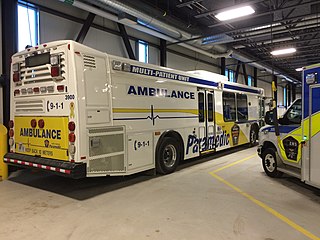 W
WAn ambulance bus is a type of ambulance with the capacity to transport and treat multiple patients. An ambulance bus is used primarily for medical evacuation of mass casualty incidents and non-emergency medical transport of care-dependent patients, and can also be used for specific problems such as drunk patients in town centres.
 W
WCEN 1789:2020 is the European Union standard for ambulances and medical transportation vehicles. This European standard specifies requirements for the design, testing, performance and equipping of road ambulances used for the transport and care of patients. This standard is applicable to road ambulances capable of transporting at least one person on a stretcher.
 W
WA combination car was a vehicle that could serve either as a hearse or as an ambulance, and had the capability of being swapped between those roles without much difficulty. This hybrid usage of the cars reflects an era when funeral homes offered emergency ambulance service in addition to their primary trade, especially in smaller towns and rural areas.
 W
WCrestline Coach Ltd. is an ambulance manufacturer located in Saskatoon, Saskatchewan, Canada, with offices in Alberta, Manitoba, Ontario, Quebec, and California. The company manufactures ambulances and specialty vehicles, and also distributes buses. The company has manufactured vehicles that have been sold into every province in Canada, the Canadian Department of National Defense as well as exported to Belgium, Brazil, Brunei, Chile, China, Colombia, Cuba, Ireland, Italy, Jordan, Korea, Kyrgyzstan, Malta, Mexico, Netherlands, Paraguay, Siberia, St Lucia, Sudan, Switzerland, United States and Vietnam.
 W
WDaimler DE was a series of chassis made by the Daimler Company from 1946 to 1953. DE chassis were the basis for Daimler's largest and most expensive cars at the time. There were two versions: the short-wheelbase DE 27 with the Daimler Twenty-seven six cylinder engine, and the long-wheelbase DE 36, the last Daimler Straight-Eight, with the Thirty-six straight-eight engine. Daimler DEs, especially the DE 36 Straight-Eight, was sold to royalty and heads of state around the world, including British royalty under the royal warrant that Daimler had held since 1900.
 W
WThe Dodge WC-54, Ambulance, 3⁄4-ton, 4 x 4,, was a variant of the Dodge WC series light 4×4 trucks, developed during World War II. Built from 1942 to 1945, they served as the U.S. Army's main ambulance, with some used as late as 1953 during the Korean War by the U.S. Army Medical Corps, and others serving as late as the 1960s in the armies of some European countries.
 W
WThe Ectomobile is a fictional vehicle from the Ghostbusters franchise. It appears in the films Ghostbusters (1984), Ghostbusters II (1989), the remake Ghostbusters (2016), in the animated television series: The Real Ghostbusters, Slimer! and Extreme Ghostbusters, and in the video games Ghostbusters: The Video Game and Beeline's Ghostbusters and coming to the upcoming film Ghostbusters: Afterlife.
 W
WThe Foton MP-X is a light commercial van that can seat up to 12 occupants produced by the Chinese automobile manufacturer Foton. The MP-X was sold throughout China and southeast Asian countries including the Philippines and Singapore.
 W
WThe history of the ambulance begins in ancient times, with the use of carts to transport patients. Ambulances were first used for emergency transport in 1487 by the Spanish forces during the siege of Málaga by the Catholic monarchs against the Emirate of Granada, and civilian variants were put into operation in the 1830s. Advances in technology throughout the 19th and 20th centuries led to the modern self-powered ambulances.
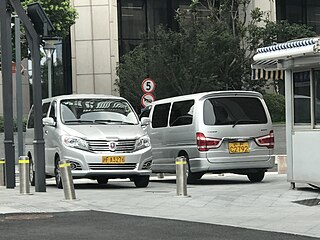 W
WThe Jinbei Granse is a 4 door mid-size van produced by Chinese auto maker Jinbei. The Jinbei Haise started out as a licensed rebadged Toyota HiAce with the first Jinbei Haise based on the fourth generation Toyota HiAce Granvia.
 W
WThe Jinbei Haise (金杯海狮) is a 4-door mid-size van produced by Chinese auto maker Jinbei. The Jinbei Haise started out as a licensed rebadged Toyota HiAce with the first Jinbei Haise based on the fourth generation Toyota HiAce.
 W
WA mobile stroke unit is an ambulance that furnishes services to diagnose, evaluate, and/or treat symptoms of an acute stroke. It may contain, in addition to the normal ambulance equipment, a device for brain imaging, a point-of-care laboratory and telemedical interaction between ambulance and hospital. Thus, this specialized ambulance includes all the tools necessary for hyperacute assessment and treatment of stroke patients and diagnosis-based triage directly at the emergency site.
 W
WMotorcycle ambulances are a type of emergency vehicle which either carries a solo paramedic or first responder to a patient; or is used with a trailer or sidecar for transporting patients. Because of its size and performance, a motorcycle ambulance is able to respond to a medical emergency much faster than a car, van, or fire truck in heavy traffic, which can increase survival rates for patients suffering cardiac arrest.
 W
WA nontransporting EMS vehicle is a vehicle that responds to and provides emergency medical services (EMS) without the ability to transport patients. For patients whose condition requires transport, an ambulance is necessary. In some cases they may fulfill other duties when not participating in EMS operations, such as policing or fire suppression.
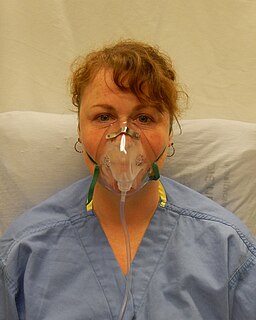 W
WAn oxygen mask provides a method to transfer breathing oxygen gas from a storage tank to the lungs. Oxygen masks may cover only the nose and mouth or the entire face. They may be made of plastic, silicone, or rubber. In certain circumstances, oxygen may be delivered via a nasal cannula instead of a mask.
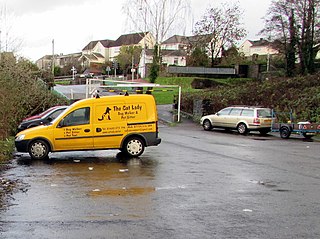 W
WA pet taxi is a type of transportation taxi service that transports various pets. Some pet taxi services also provide pet ambulance, animal boarding and grooming services. Some pet sitting companies may also offer pet taxi services. Some pet taxis charge by the mile, while others may offer a flat rate for various trips. Less commonly, some pet taxi services may offer long-distance pet transportation, such as a trip from New York City to Florida.
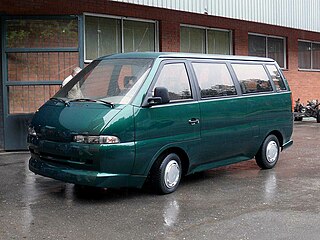 W
WThe RAF M2 "Stils" was designed by Rīgas Autobusu Fabrika in 1994. It was designed to replace the aging RAF-2203 and offer a new modern vehicle to the newly opened market after collapse of Soviet Union. Only 2 prototypes were ever produced until bankruptcy of Rīgas Autobusu Fabrika in 1998. Both prototypes were lost after the bankruptcy but were found and shown to public in 2011.
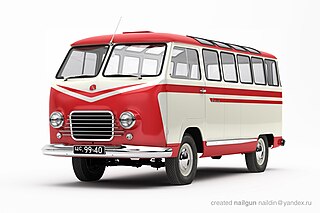 W
WThe RAF-977 was a Soviet cabover van made by Riga Autobus Factory (RAF) based on components from the GAZ-21 Volga. It was introduced in 1958 and was manufactured in two main styles: a 10-seater minibus and an ambulance. In 1961, an updated version called the RAF-977D was put into production; this had a one-piece windshield, instead of the split, and Volga steering wheel among its other detail changes. Variants included the 977I ambulance and a special Intourist model, which had better seats, roof lights, and sunroof.
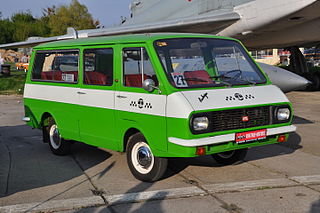 W
WThe RAF-2203 Latvija was a cabover van designed and developed by Rīgas Autobusu Fabrika from 1976–1997. They were widely used throughout the USSR as fixed-run taxis (marshrutkas), medical cars, used for trade and as a special services vehicles. It was the successor of the RAF-977.
 W
WA rail ambulance is a vehicle used for medical transportation services on railway lines. The first rail ambulance in Queensland, Australia was introduced in 1918, with the last withdrawn from service around 1990.
 W
WSML Isuzu Limited (SMLI) is a commercial vehicle manufacturer established in 1983. SMLI produces and sells buses, ambulances and customized vehicles. Sumitomo Corporation and Isuzu Motors hold a 44% and 15% stake of the company respectively.
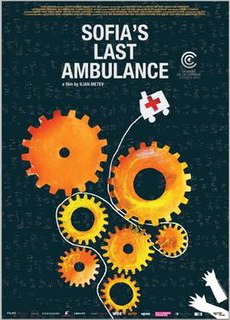 W
WSofia's Last Ambulance is a feature-length observational documentary film by Bulgarian director Ilian Metev. The film premiered at the 51st Semaine de la Critique at the 2012 Cannes Film Festival, where it won the inaugural France 4 Visionary Award. It was the second documentary ever to compete in the section's 51-year history.
 W
WA stretcher, gurney, litter, or pram is an apparatus used for moving patients who require medical care. A basic type must be carried by two or more people. A wheeled stretcher is often equipped with variable height frames, wheels, tracks, or skids. Stretchers are primarily used in acute out-of-hospital care situations by emergency medical services (EMS), military, and search and rescue personnel. In medical forensics the right arm of a corpse is left hanging off the stretcher to let paramedics know it is not a wounded patient. They are also used to hold prisoners during lethal injections in the United States.
 W
WThe Tata Winger is a light commercial van produced by the Indian automaker Tata Motors in 2007, It is a rebadged version of the Renault Trafic Mk1 Phase 3 van. but fitted with Tata's own 2 litre diesel engines.
 W
WThe water ambulance is a boat used for emergency medical care in island areas such as the city of Venice, Italy, the Isles of Scilly, UK or the Norway fjords.